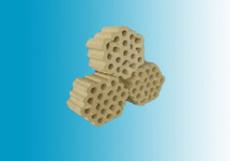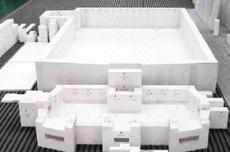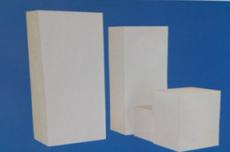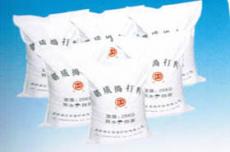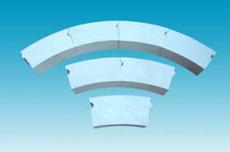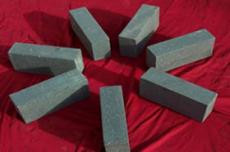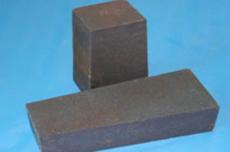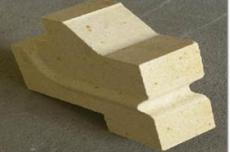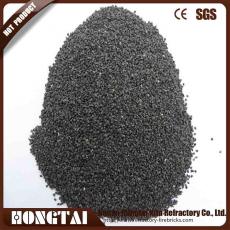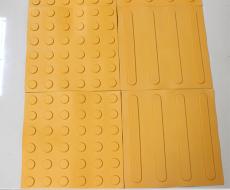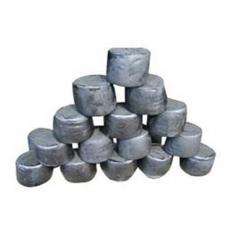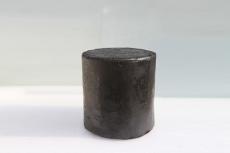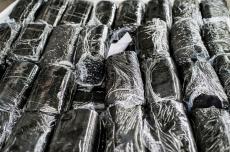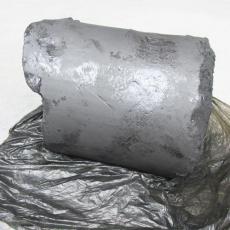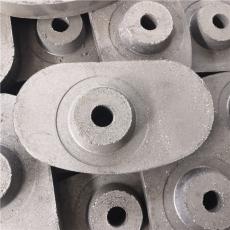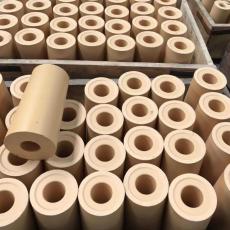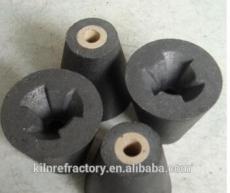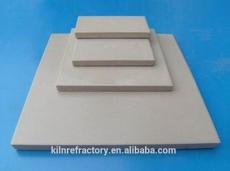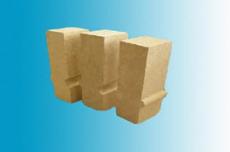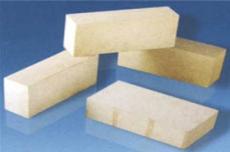
The unit kiln is the "heart" of the pool kiln wire drawing manufacturer. The quality of the refractory bricks it uses plays a very critical role in improving the quality of fiberglass products, increasing output, saving fuel, reducing costs and extending the operating life of the kiln. effect.
Refractory bricks are subjected to high temperatures, rapid temperature changes, physical and chemical erosion and mechanical erosion from flames, powders and molten glass for a long time in the kiln, and slowly peel off into the molten glass, causing bubbles, ripples and cracks to the molten glass. Various disadvantages such as refractory material stones make wire drawing production difficult.
When the refractory bricks are eroded and peeled off to a certain extent, the unit kiln cannot maintain normal drawing operations, and the kiln must be shut down immediately for cold repairs. For this reason, from the perspective of glass melting quality, drawing output and kiln operating life, the refractory bricks of the unit kiln must have sufficient high temperature resistance, resistance to sudden temperature changes and resistance to glass liquid, furnace atmosphere, flame And the performance of powder erosion and erosion, basically no or minimal pollution to the glass liquid, low air permeability, small heat loss and necessary structural strength at high temperatures.
In view of the different thermal requirements of different structural parts of the unit kiln, in the design of the unit kiln, different refractory bricks must be selected for different parts of the kiln body to meet the production process requirements and reduce the cost of the kiln.
The main refractory bricks used in each structural part of the unit kiln are as follows:
PART.01Dense chromium oxide brick
According to foreign special reports, dense chromium oxide bricks have the best resistance to high-temperature E glass liquid erosion. What is especially valuable is that the peeling off of the eroded objects basically does not cause pollution to the glass liquid. Therefore, it has become the main refractory brick material for E glass unit kiln.
It is said that this dense chromium oxide brick is formed by isostatic pressing. It is made by grinding the ore into fine powder and then homogenizing it using the spray drying method. The micron powder does not contain any organic or other binding components. The homogenized material is then put into a special rubber film bag, which is tied tightly after the air is exhausted. Then it is put into a pressure vessel and pumped into the pressure cylinder with a hydraulic pump. The resulting pressure can reach 200MPa and is equal in all directions, so it is called isostatic pressure. The blank made by this new process has a very high density and is very uniform. Even without roasting and without any binder, it is hard enough to be cut, drilled or otherwise machined.
This dense chromium oxide brick contains 96% Cr2O3, TiO24%, bulk density is 4.5g/cm3, apparent porosity is 10%, normal temperature compressive strength is 300N/mm2, load softening point is 1700TaC, refractory degree is 42SK, reversible thermal expansion rate is at 1000 degrees The thermal conductivity is 0.75%, the thermal conductivity is 3.55w/m.k at 1200 degrees, the resistivity is 56 ohm.cm at 1500 degrees, and its maximum operating temperature can reach 1800 degrees.
Due to the above-mentioned excellent physical and chemical properties of dense chromium oxide bricks, they are often used in unit kilns in parts that are in contact with high-temperature glass liquid, such as the tank wall of the melting part, the bottom of the tank and the main passage (including the clarification part and the transition passage), as well as the main passage. Access to the climbing bricks (flow trough) at the bottom of the pool and the exhaust gas inlet channel and other parts.
PART.02Dense zirconia brick
The corrosion resistance of high-temperature E glass liquid of dense zirconia bricks is slightly lower than that of dense chromium oxide bricks.
The chemical composition of the brick is Zr065%, Si034%, bulk density is 4.25g/cm3, apparent porosity is 2%, normal temperature compressive strength is 100N/mm, load softening point is 1700TaC, refractoriness is 40SK, reversible thermal expansion rate is at 1000 degrees is 0.50%, the thermal conductivity is 3.6w/mk at 1200 degrees, and its maximum operating temperature is 1700 degrees.
Dense zirconia bricks are often used in unit kilns as backing bricks for parts in contact with low-temperature glass liquid and dense chromium oxide bricks, such as melting tank bottom bricks, gap bricks on both sides above the feeding port, clarification tank bottom bricks, and main passages The backing bricks of the pool wall and the pool bottom bricks of the working passage, etc.
The basic raw material of ordinary dense zirconia bricks is natural zirconium sand with a particle size of about 0.5mm, while coarse-grained dense zirconia bricks need to add a certain proportion of coarse-grained zirconium sand with a particle size of about 5mm. Natural zirconium sand of this size does not exist. This kind of coarse-grained zirconium sand is specially produced using isostatic pressing and sintering methods. After adding a certain proportion of this coarse-grained zirconium sand, the internal structure of the brick is greatly improved, thereby significantly improving the brick's resistance to rapid cooling and rapid heating and resistance to glass liquid erosion. The chemical composition, load softening point, refractoriness and maximum service temperature of this brick are the same as those of dense zirconia bricks, but its bulk density (bulk weight) is 375g/cm3, its apparent porosity is 17%, and its reversible thermal expansion rate is 1000 degrees. It is 0.45% under the condition of 1200 degrees, and the thermal conductivity is 2.39w/m.k under the condition of 1200 degrees. Because this brick has excellent thermal shock resistance, it can be widely used in the upper structure of unit kilns and brushed drainboard supporting bricks.
PART.03 Standard zirconium brick
The chemical composition of the brick is ZrO2 66.2%, Al2O3 0.1%, SiO2 33.1%, Fe2O3 0.1%. Its bulk density is 3.73g/cm3, its apparent porosity is 17.6%, its cold hydraulic strength is 850kg/cm3, its thermal expansion rate at 1000 degrees is 0.48%, and its load softening temperature at 2kg/cm2 is greater than 1650 degrees.
This brick is mainly used as the backing brick of the dense zirconia brick, the observation hole brick of the flame space, the wall brick of the feeding port, the brick of the foot brick, the flame space of the main passage and the branch passage includes the roof brick and the burner brick, and Transition bricks between burner bricks and mullite bricks and gap bricks on both sides of the kiln, etc.
PART.04 Sintered mullite bricks
The chemical composition of this brick is Al2O3 greater than 74%, SiO2 22.2%, its bulk density is greater than 2.5g/cm3, apparent porosity is less than 18%, refractory degree is greater than 37SK, compressive strength is greater than 700kg/cm2, under the condition of 2kg/cm2 The load softening temperature is greater than 1650 degrees, and the thermal expansion rate under 1000 degrees is less than 0.6%.
The main uses of this brick are the backing bricks of standard zirconium bricks, the walls of the kiln, the front wall (i.e. the partition wall with the main passage), the lining bricks of the flue of the passage, the feet of the large pot and the outer layer of the discharge port Bricks, exterior wall bricks of the heat exchanger inlet flue and exhaust gas passage bricks, etc. In addition, fused mullite bricks can also be used as kiln vents, parapets and retaining bricks.
PART.05 Fused zirconium corundum brick
The chemical composition of the brick is: ZrO2 34%, Al2O3 49.2%, SiO2 15.9%. Its bulk density is 3.85g/cm3, its apparent porosity is 0.45%, its cold compressive strength is 3000kg/cm3, and its thermal expansion rate is 0.17%. The main uses of this brick are melting section burner bricks and feed port bricks.
PART.06 Fused chrome corundum brick
The chemical composition of the brick is: Cr2O3 28.3%, Al2O3 58.3%, MgO 6%, Fe2O35.2%. Its bulk density is 3.4g/cm3, apparent porosity is 4.3%, cold compressive strength is 2000Kg/cm3, and thermal expansion rate is 0.17%. The main use of this brick is as a flue brick at the inlet of the heat exchanger.
PART.07 Refractory clay bricks
The chemical composition of the brick is: SiO2 52%, Al2O3 44%, Fe2O3 1.2%. Its bulk density is 2.15g/cm2, apparent porosity is 19%, compressive strength is 500kg/cm2, its thermal expansion rate is 0.5% under the condition of 1000 degrees, and its load softening point under the condition of 2kg/cm2 is 1420 degrees. This brick is mainly used as the backing brick of dense zirconia bricks in unit kiln masonry.
PART.08 Refractory insulation bricks
E glass unit kiln requires excellent thermal insulation layer to improve its thermal efficiency. For this purpose, low porosity clay bricks, ordinary clay bricks, clay insulation bricks, alumina and high alumina foam insulation bricks and hard calcium silicate boards are commonly used as dense zirconium bricks, standard zirconium bricks and mullite bricks, refractory clay Brick outer layer insulation material. This type of refractory insulation materials, produced domestically, can meet the requirements for use in unit kilns.
